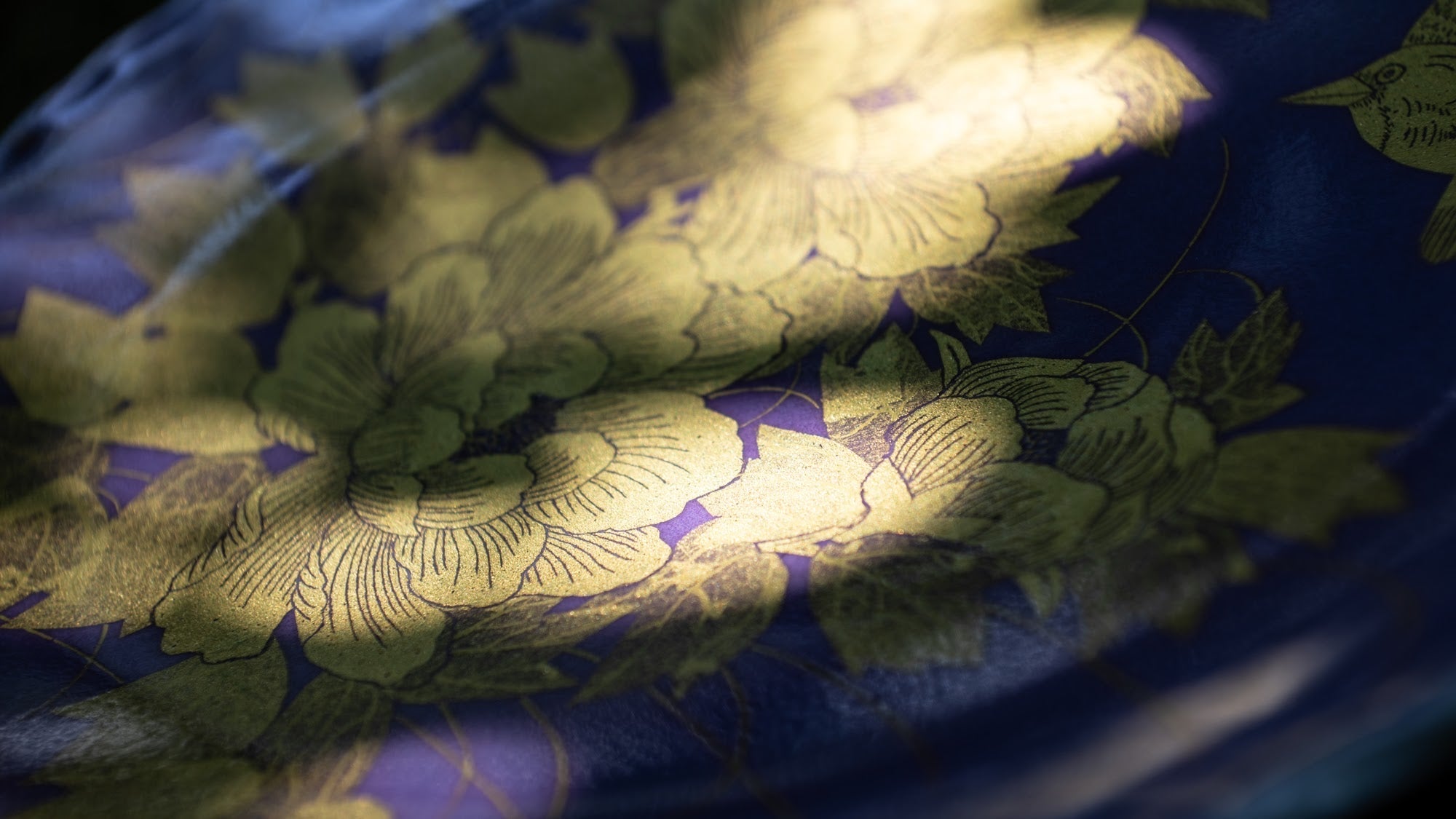
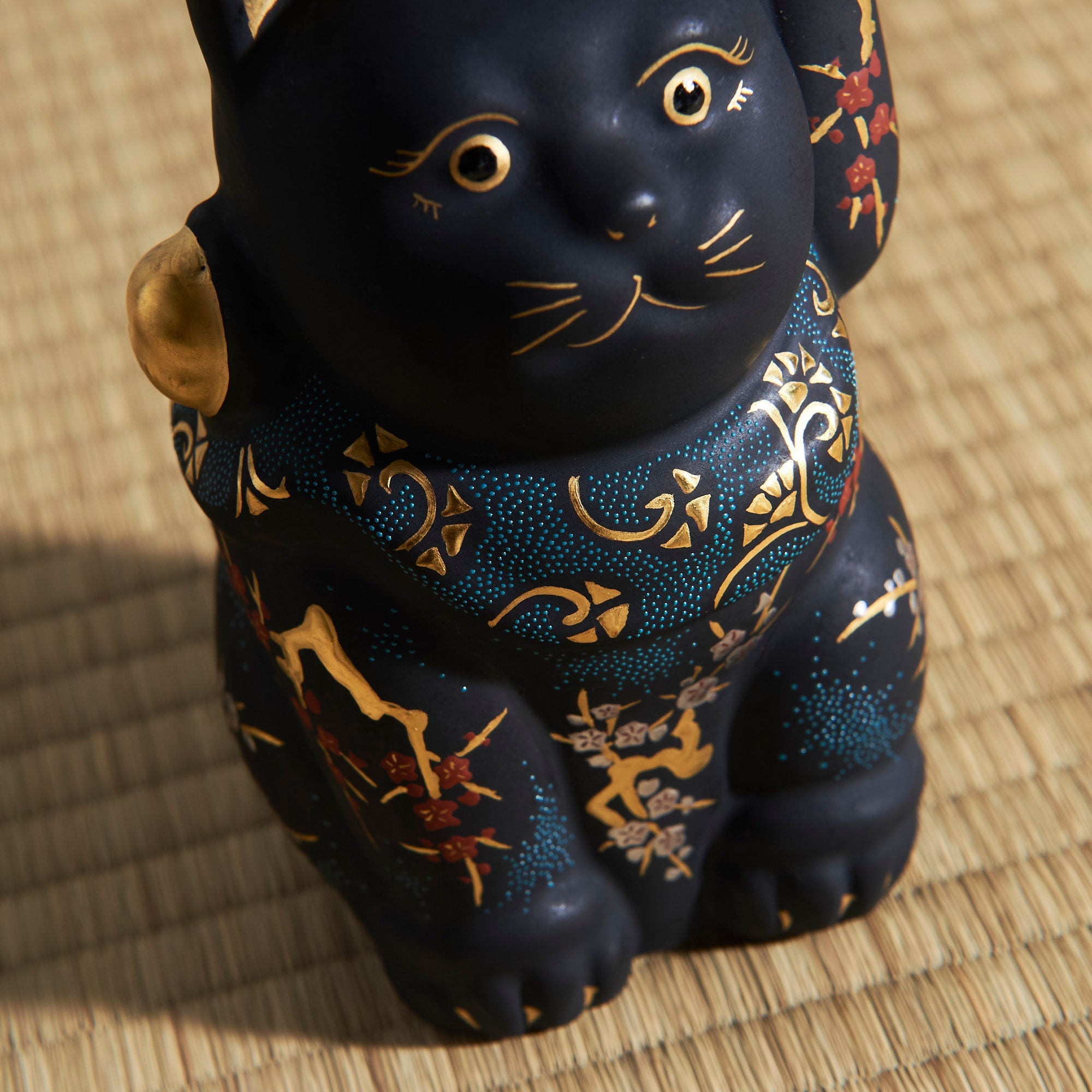
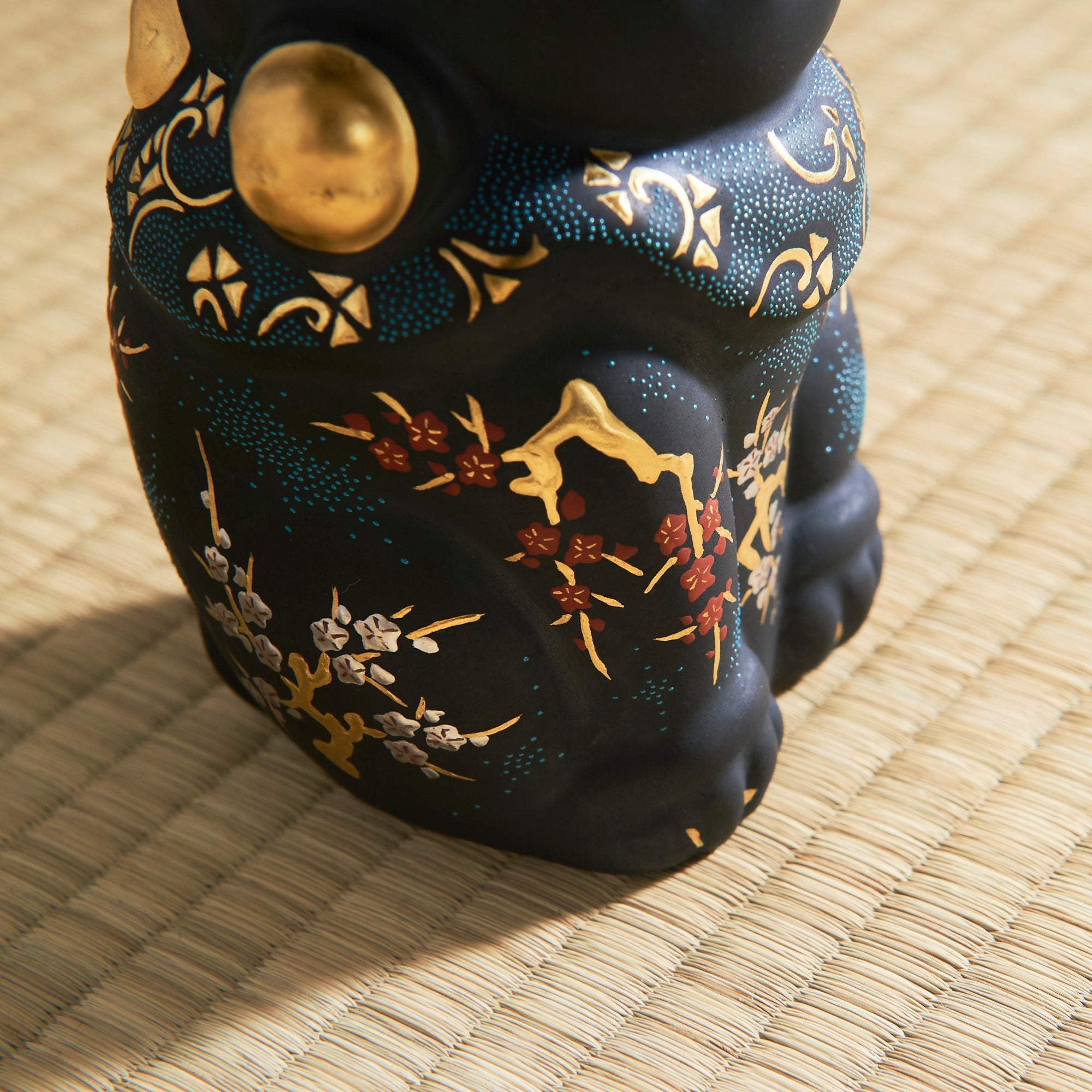
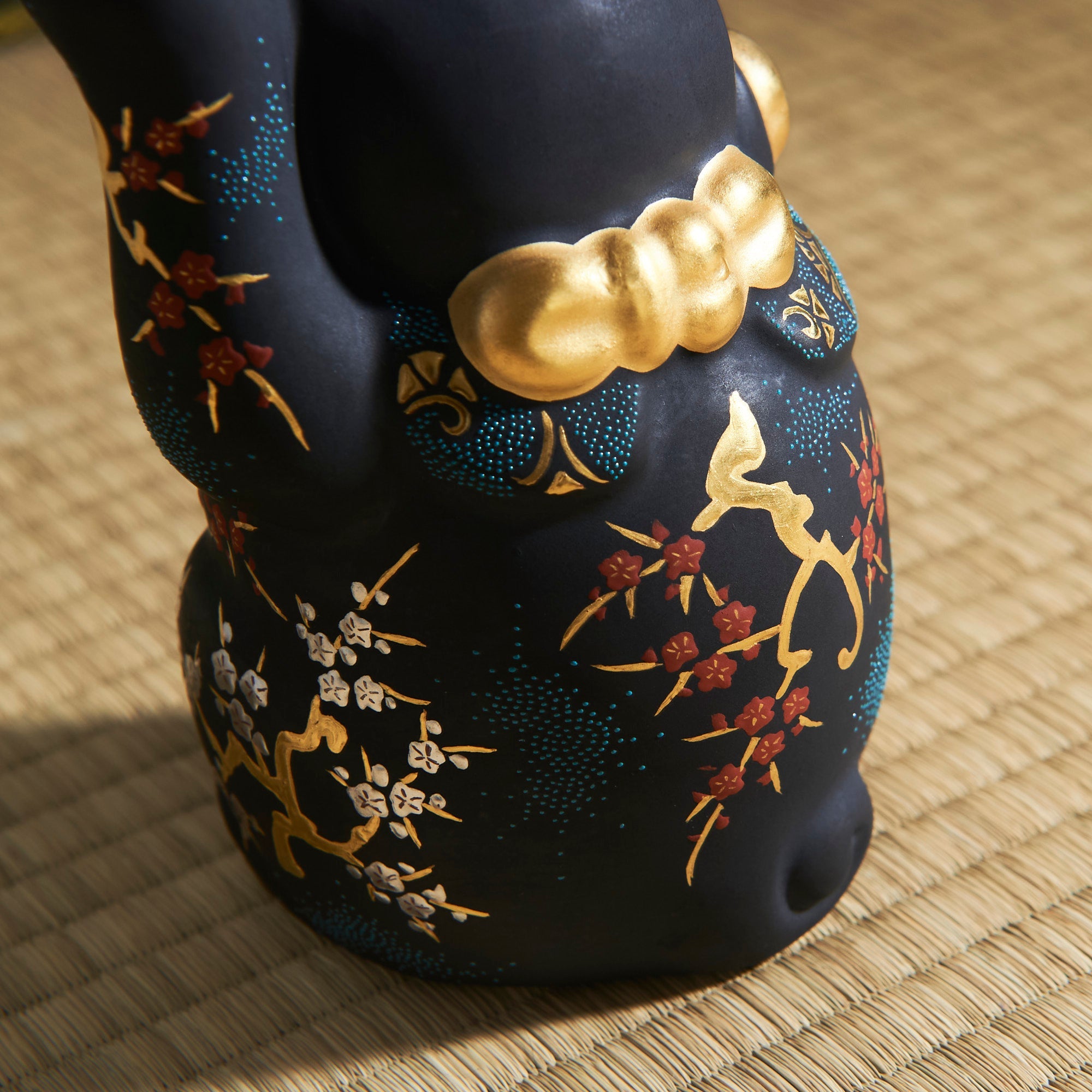
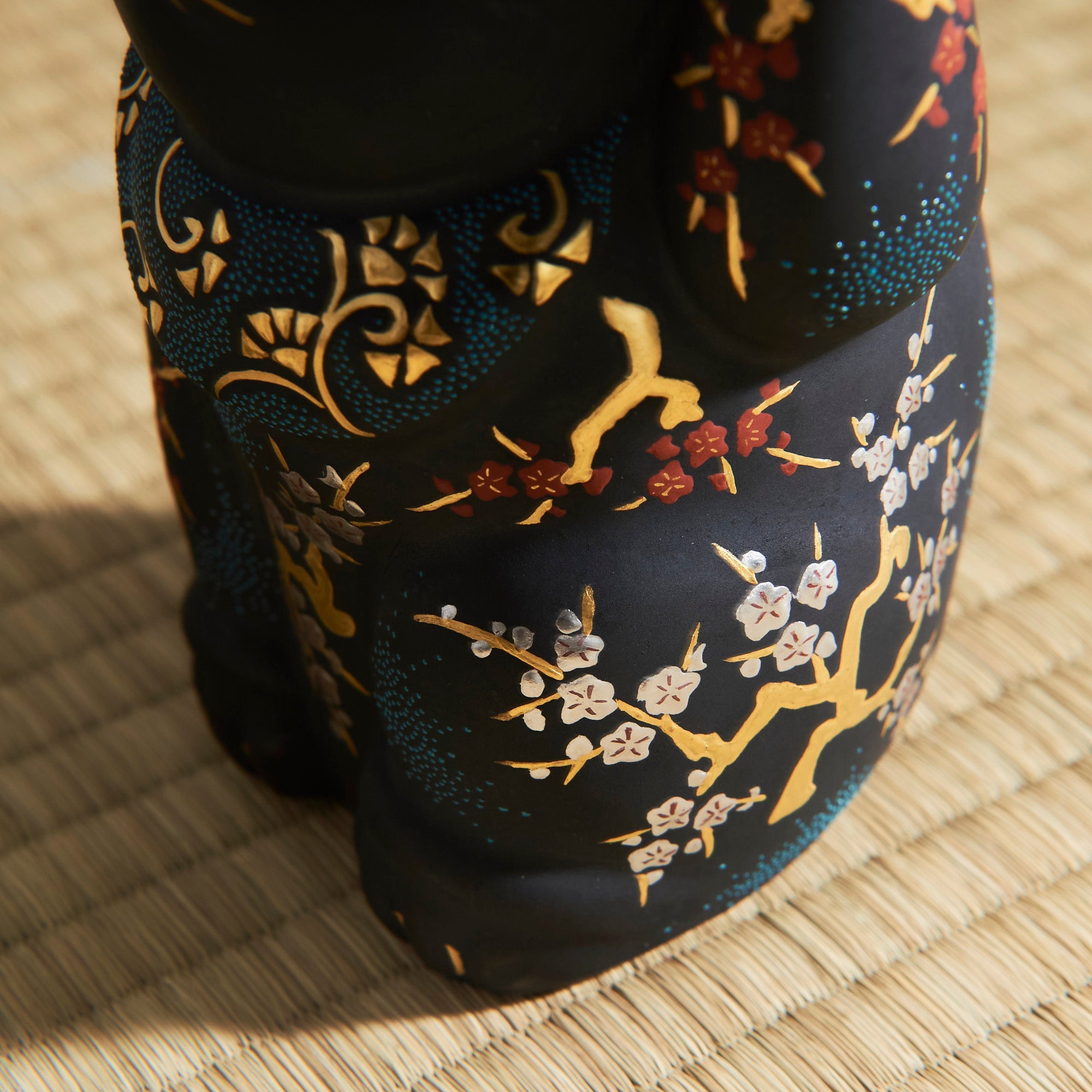
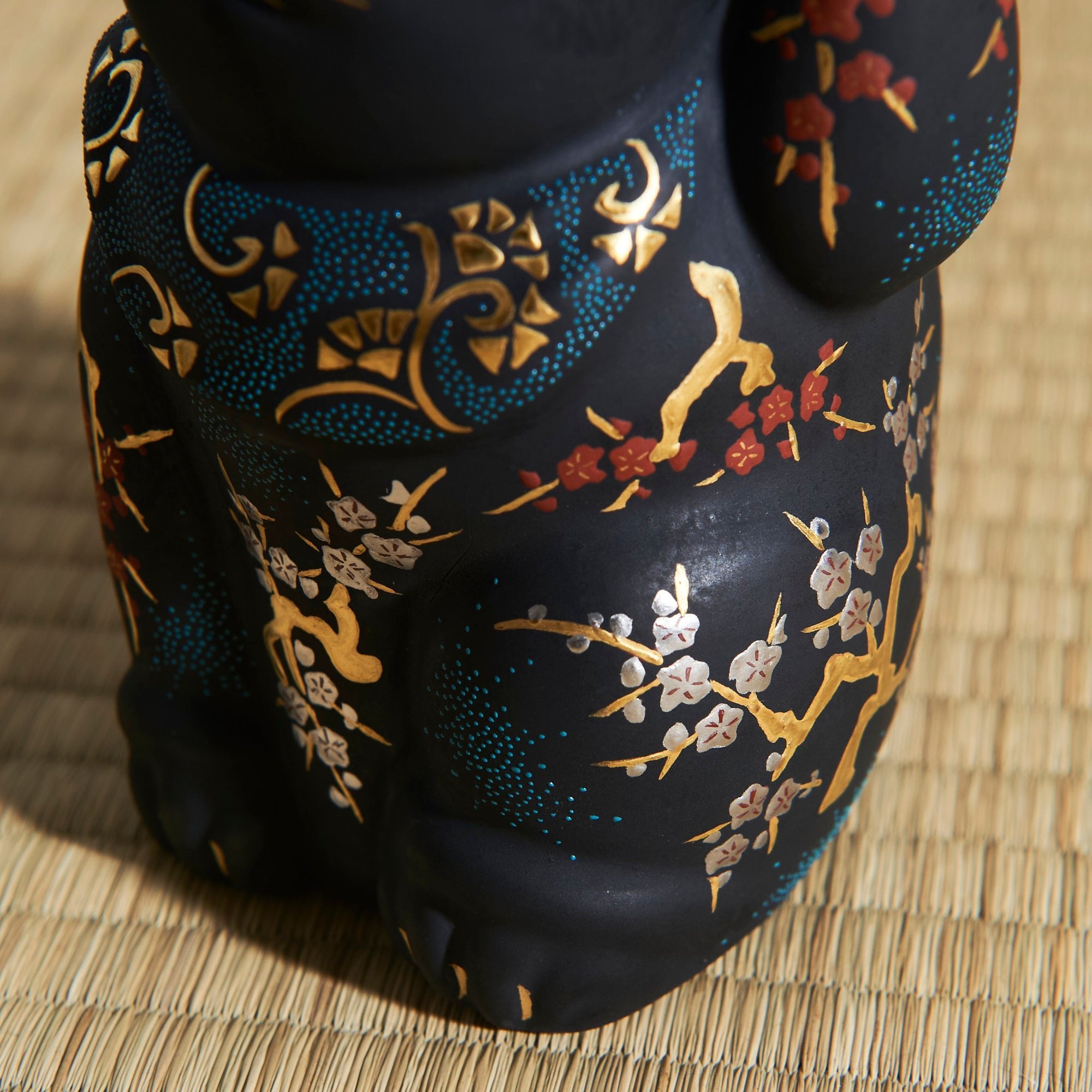
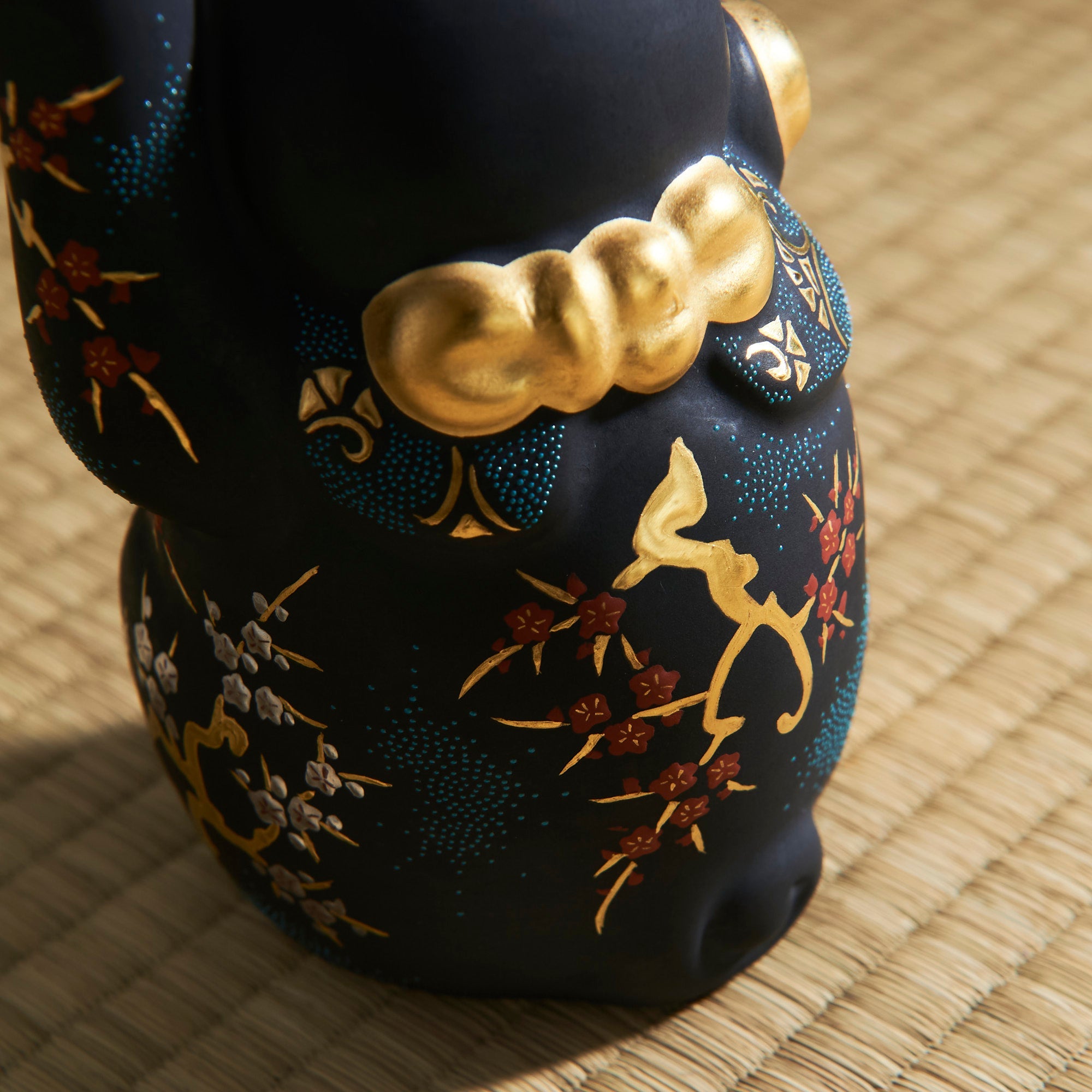
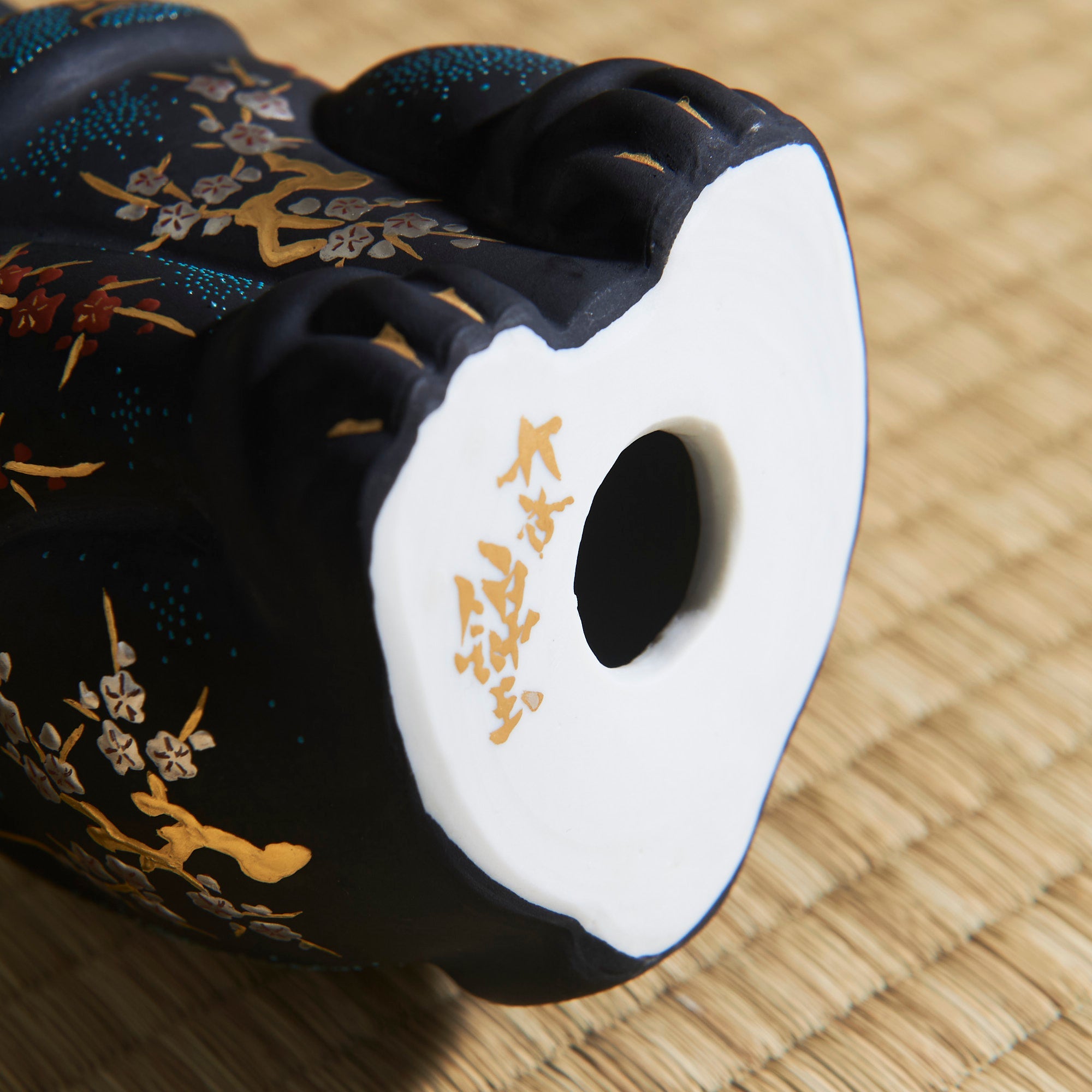
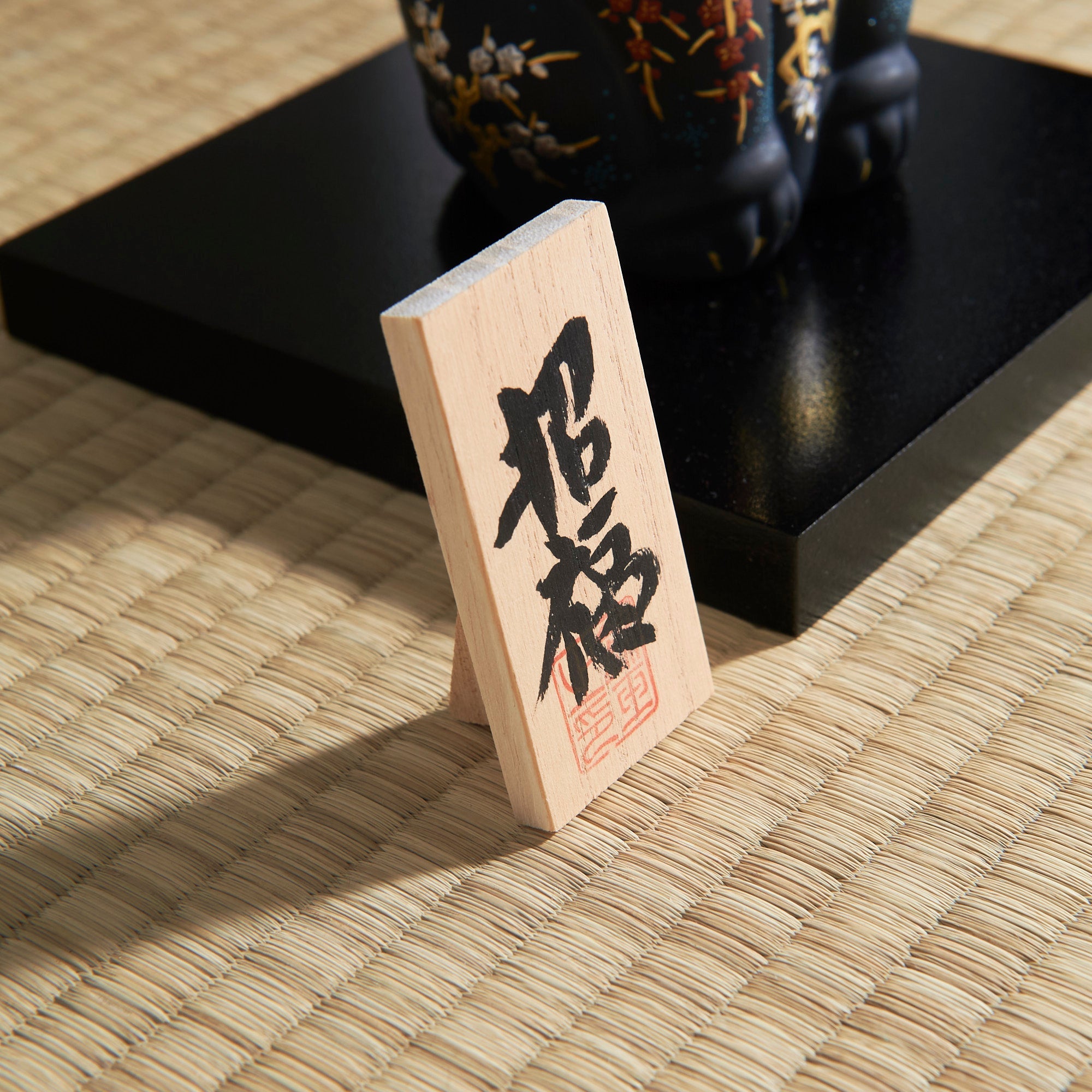
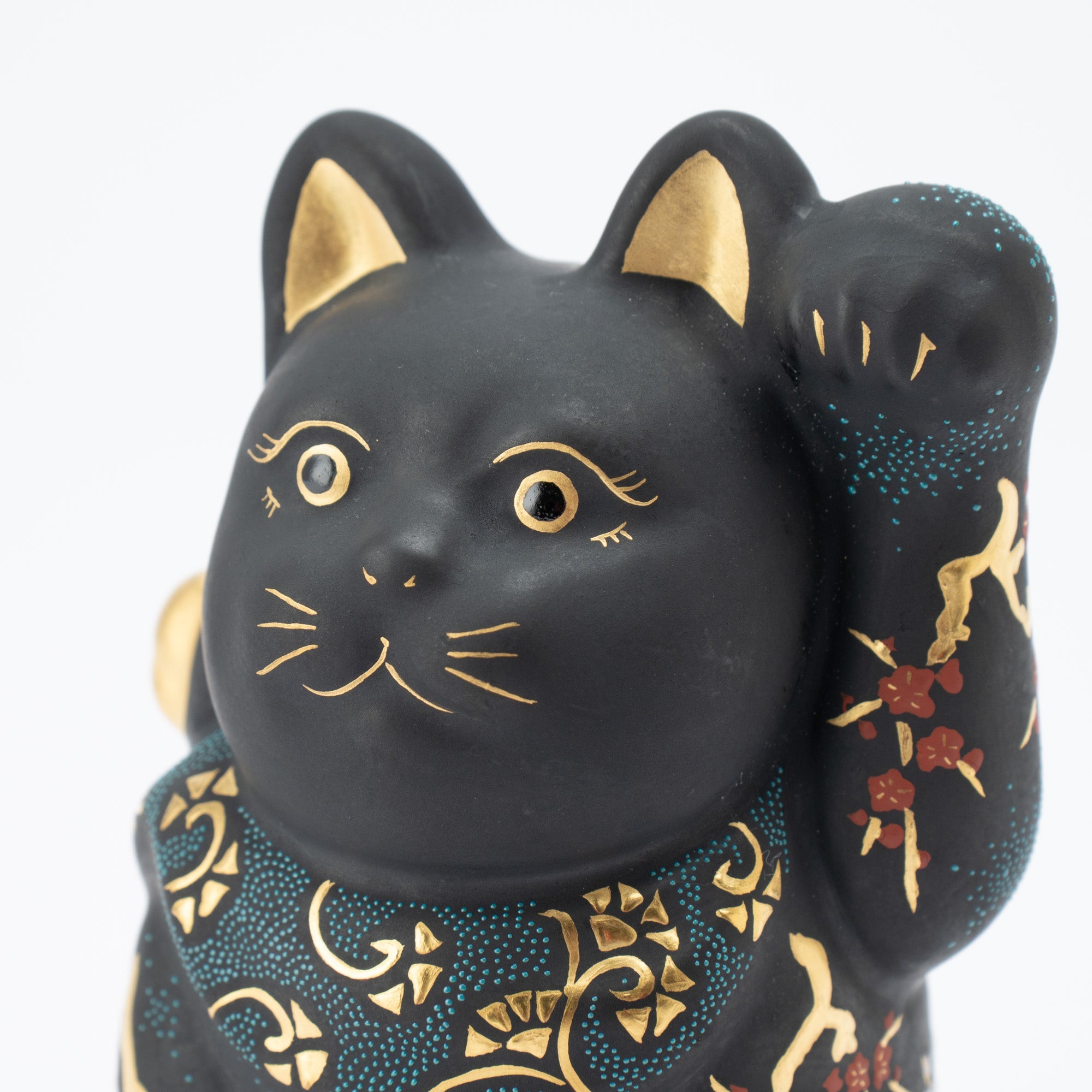
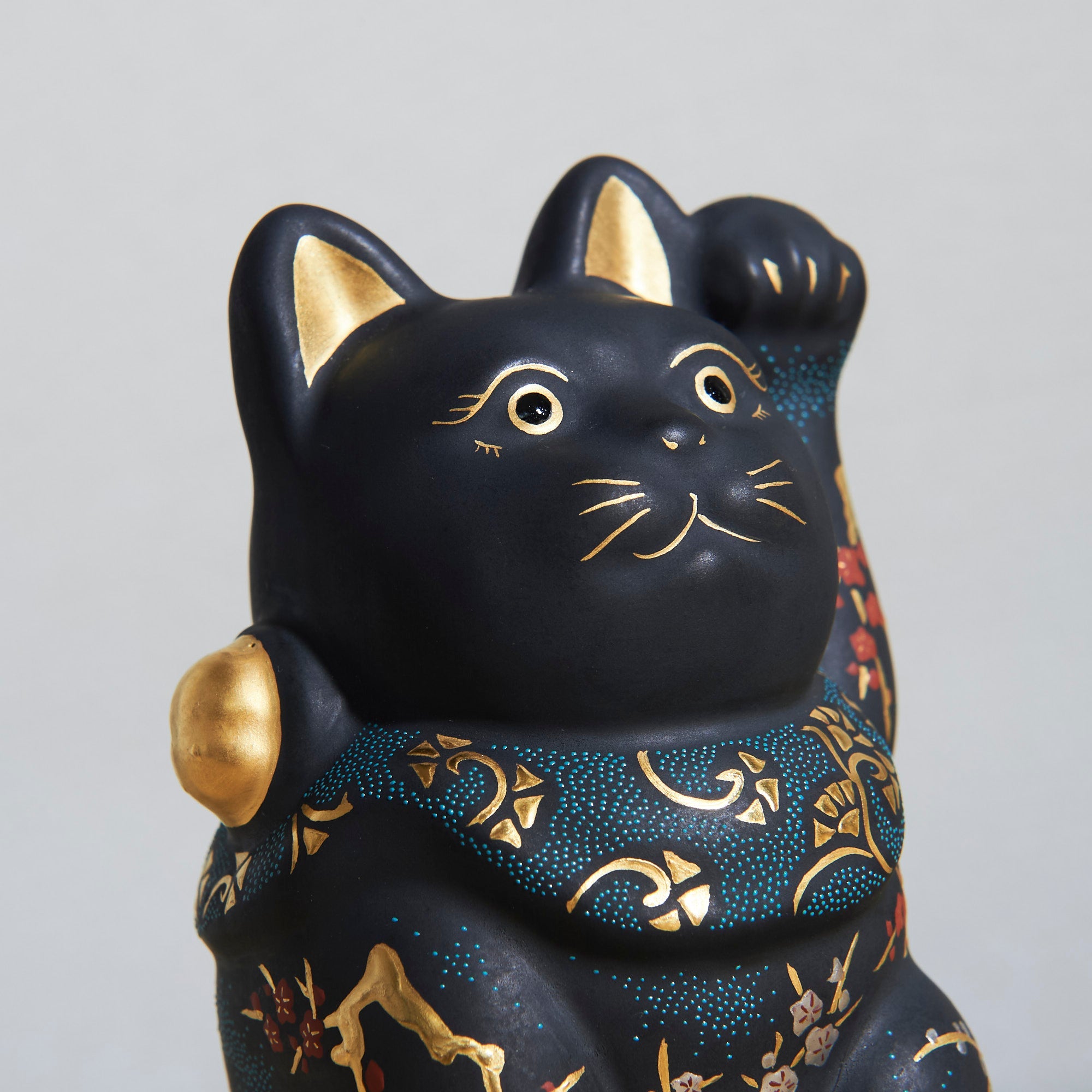
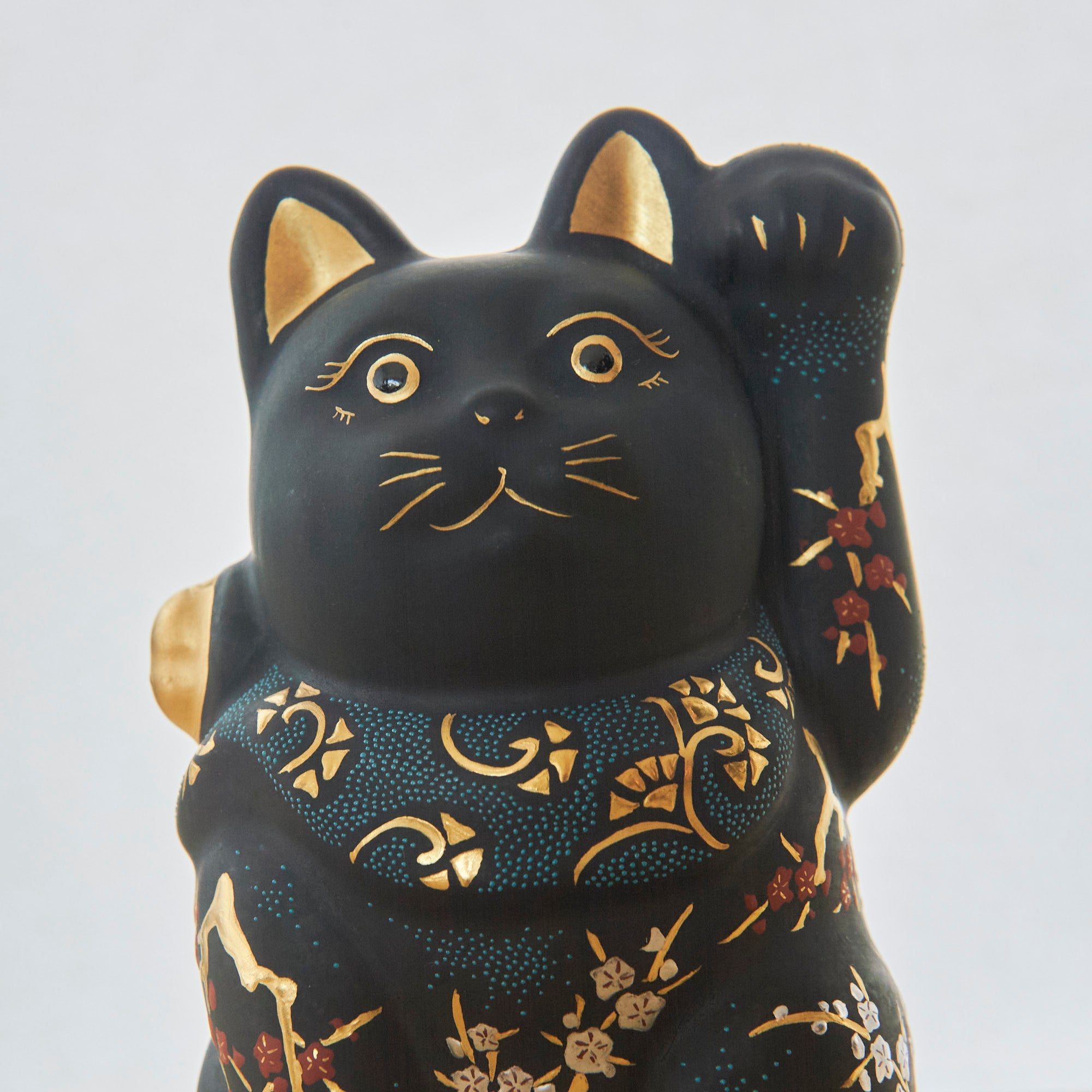
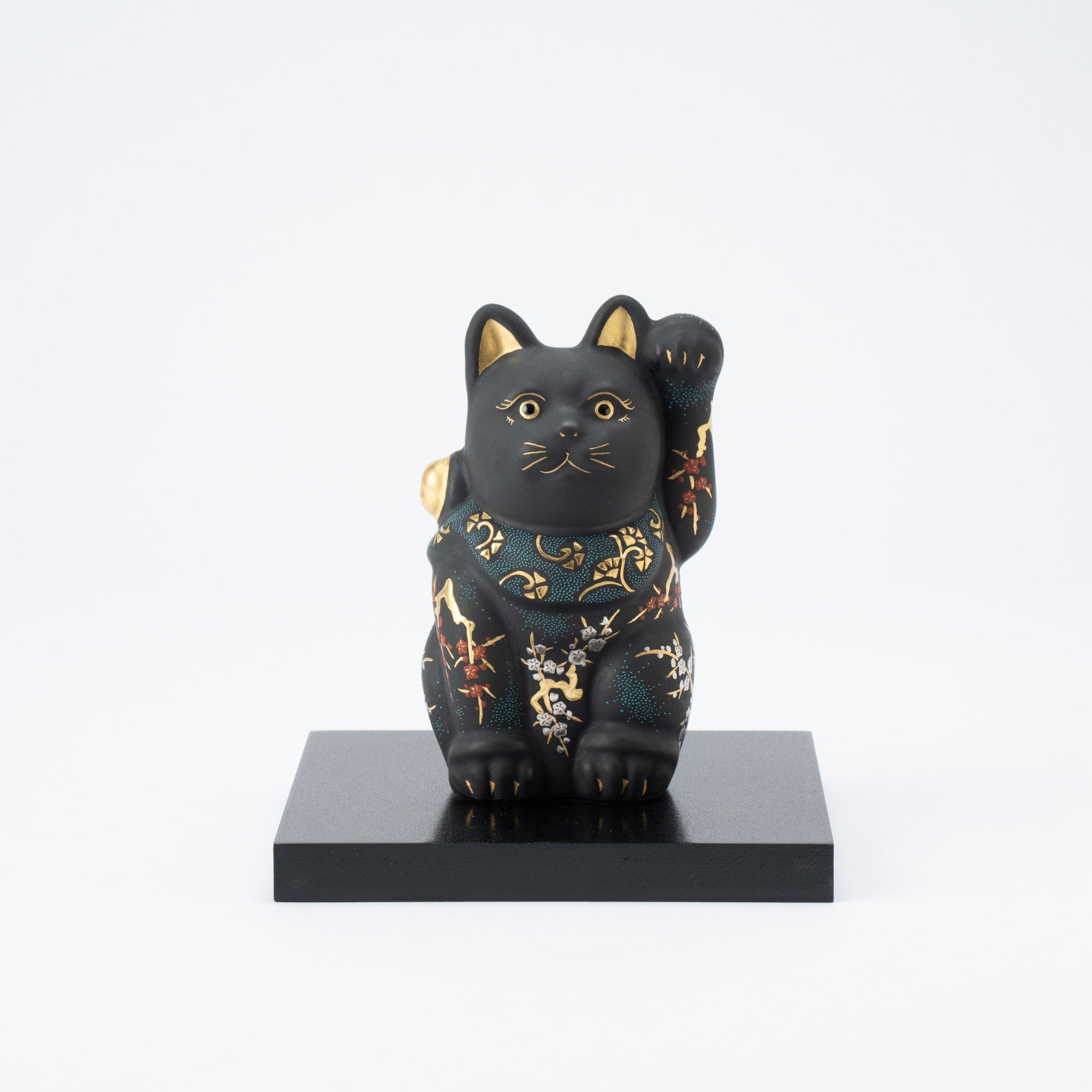
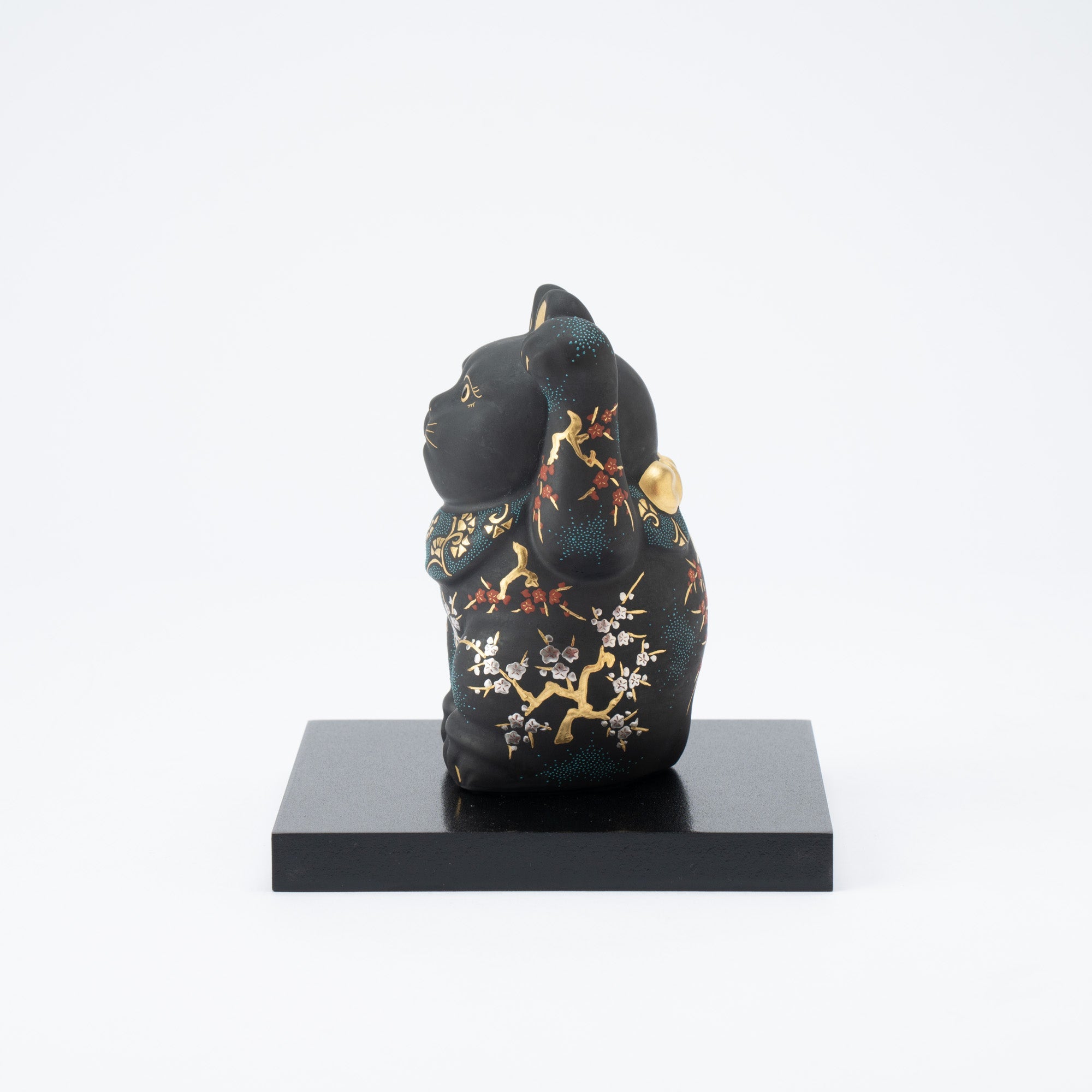
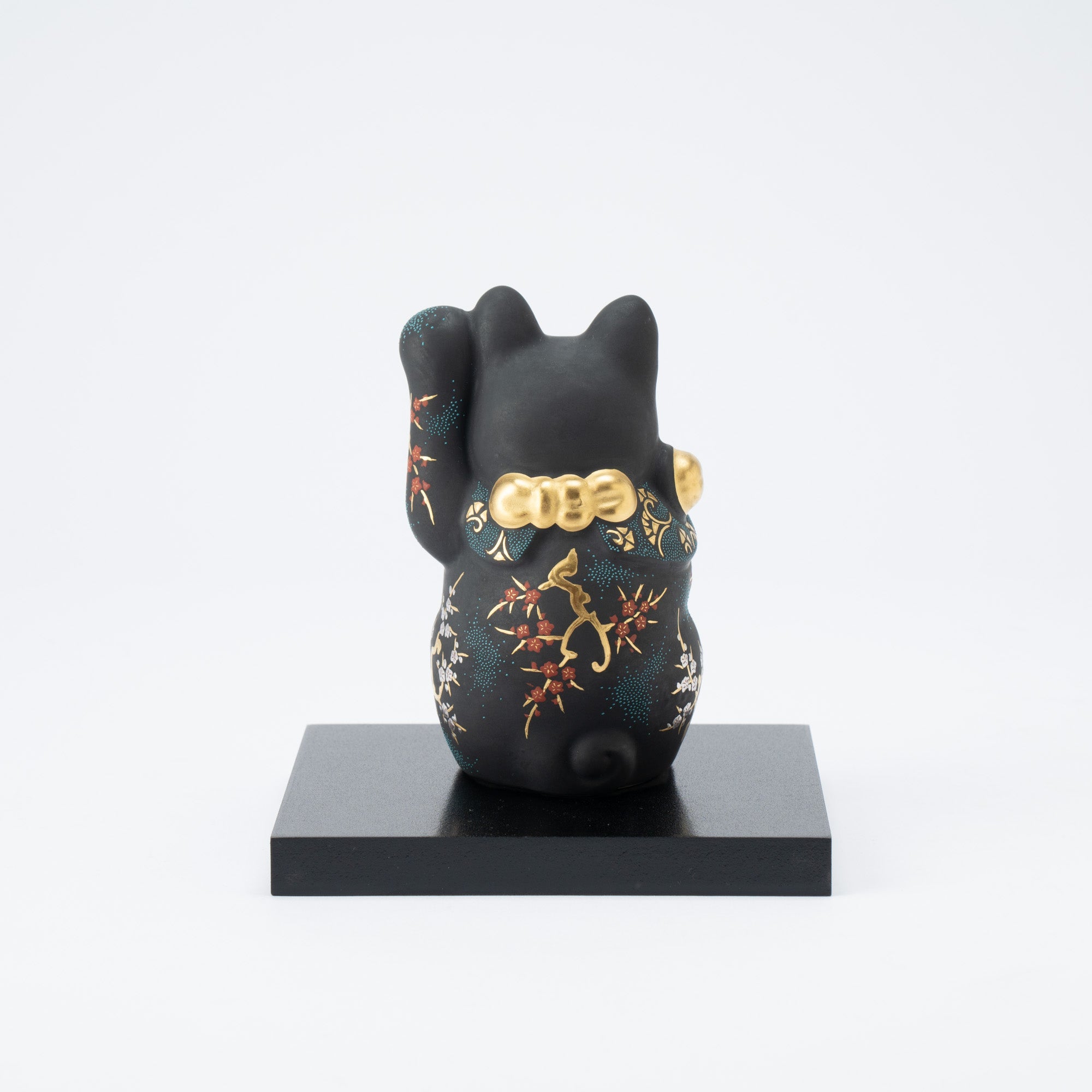
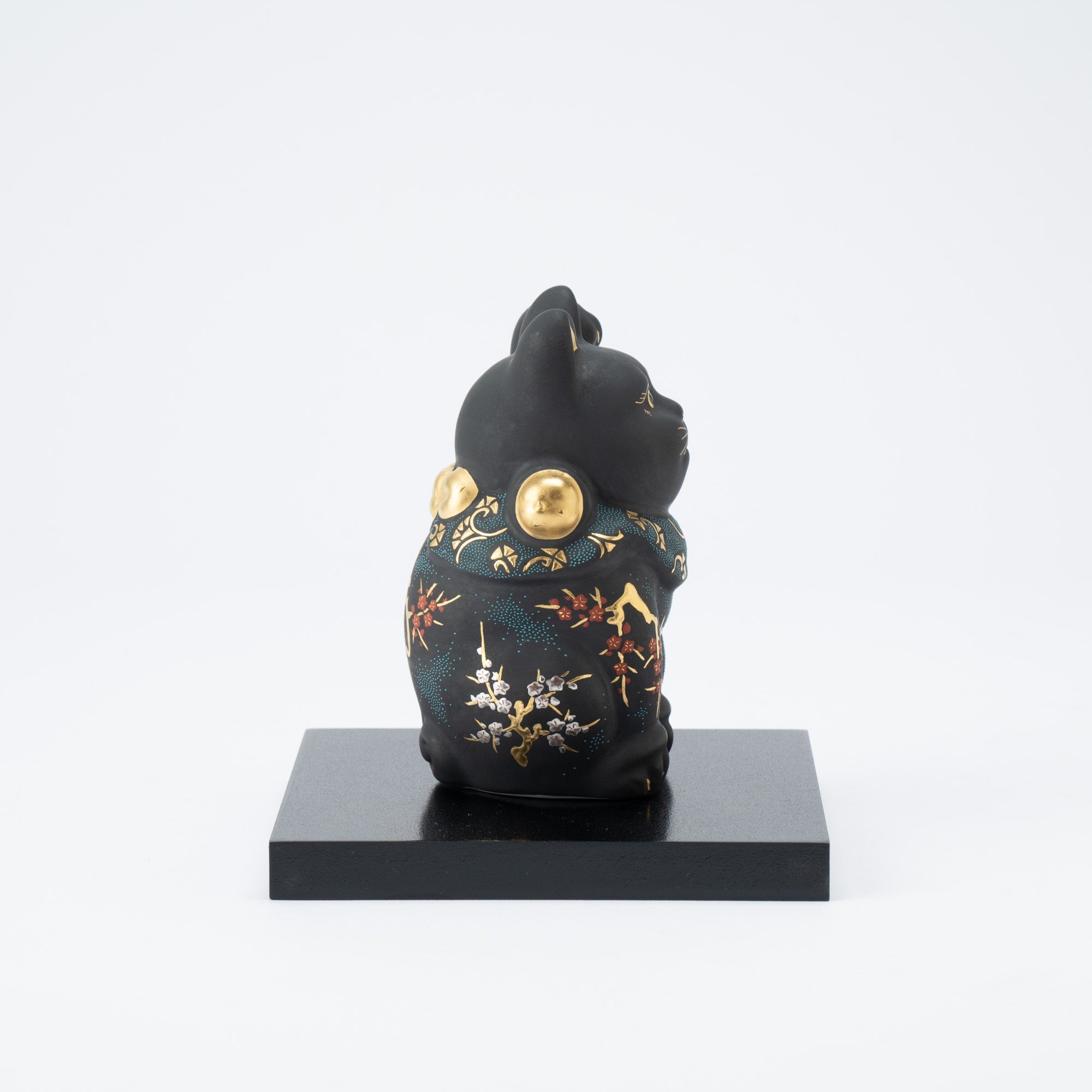
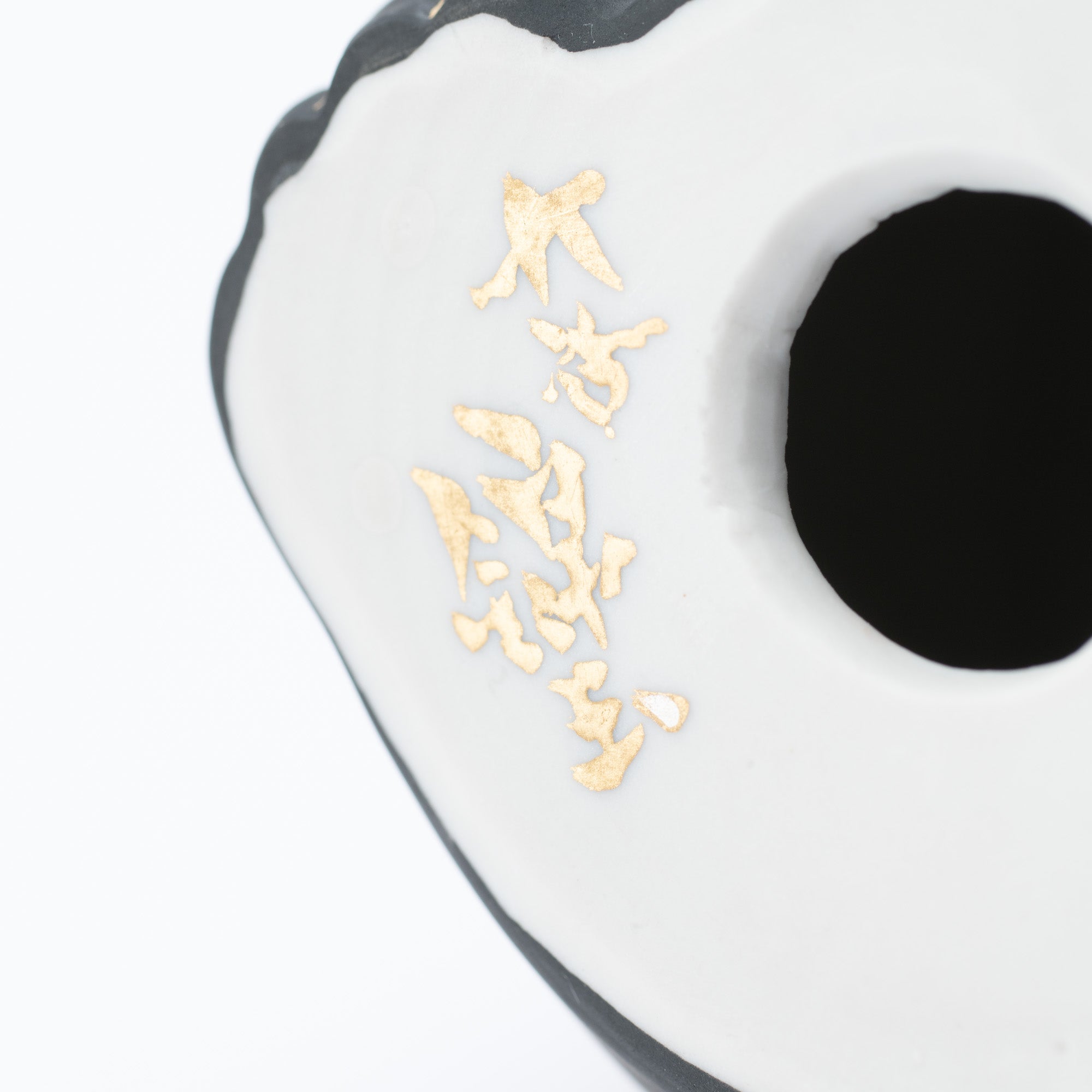
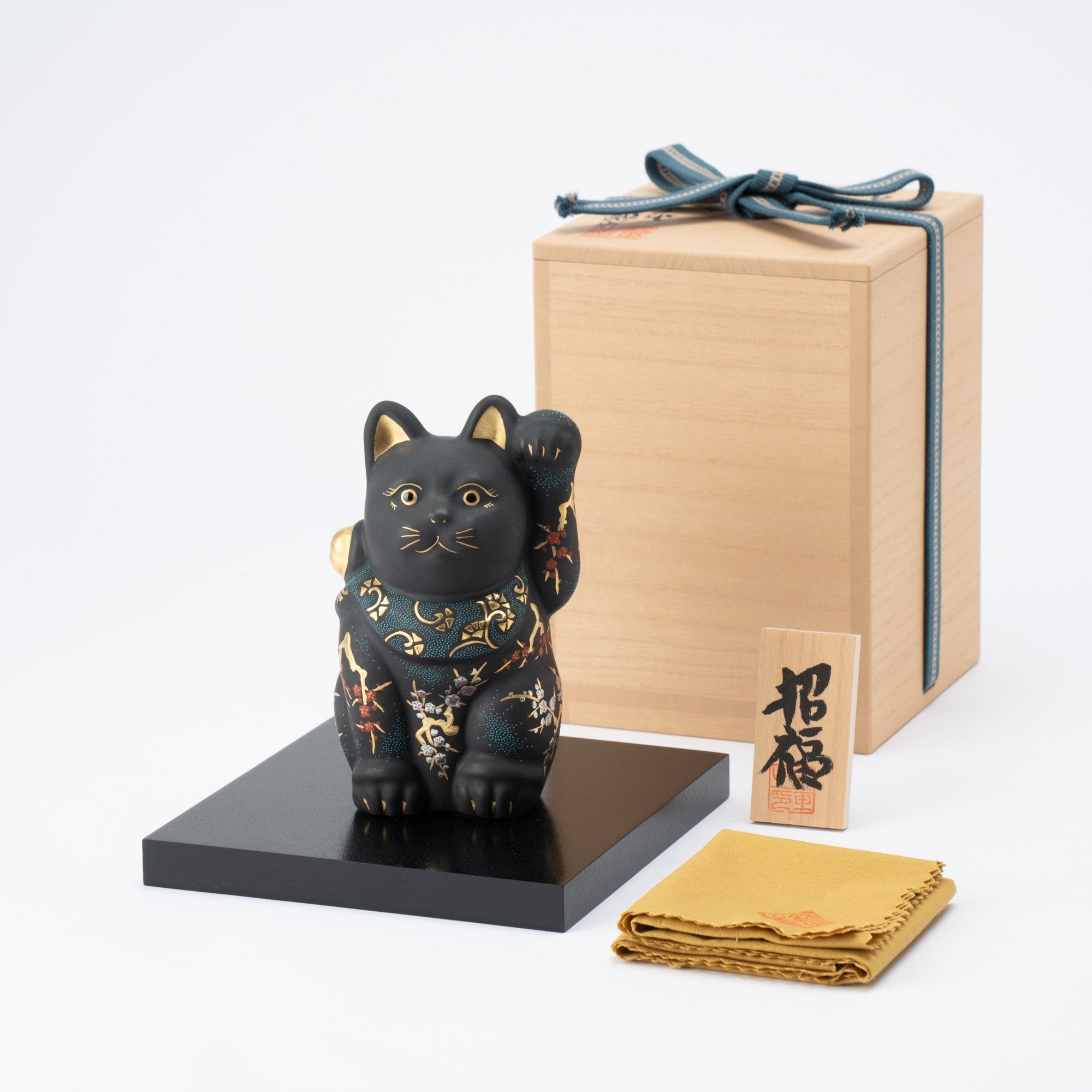


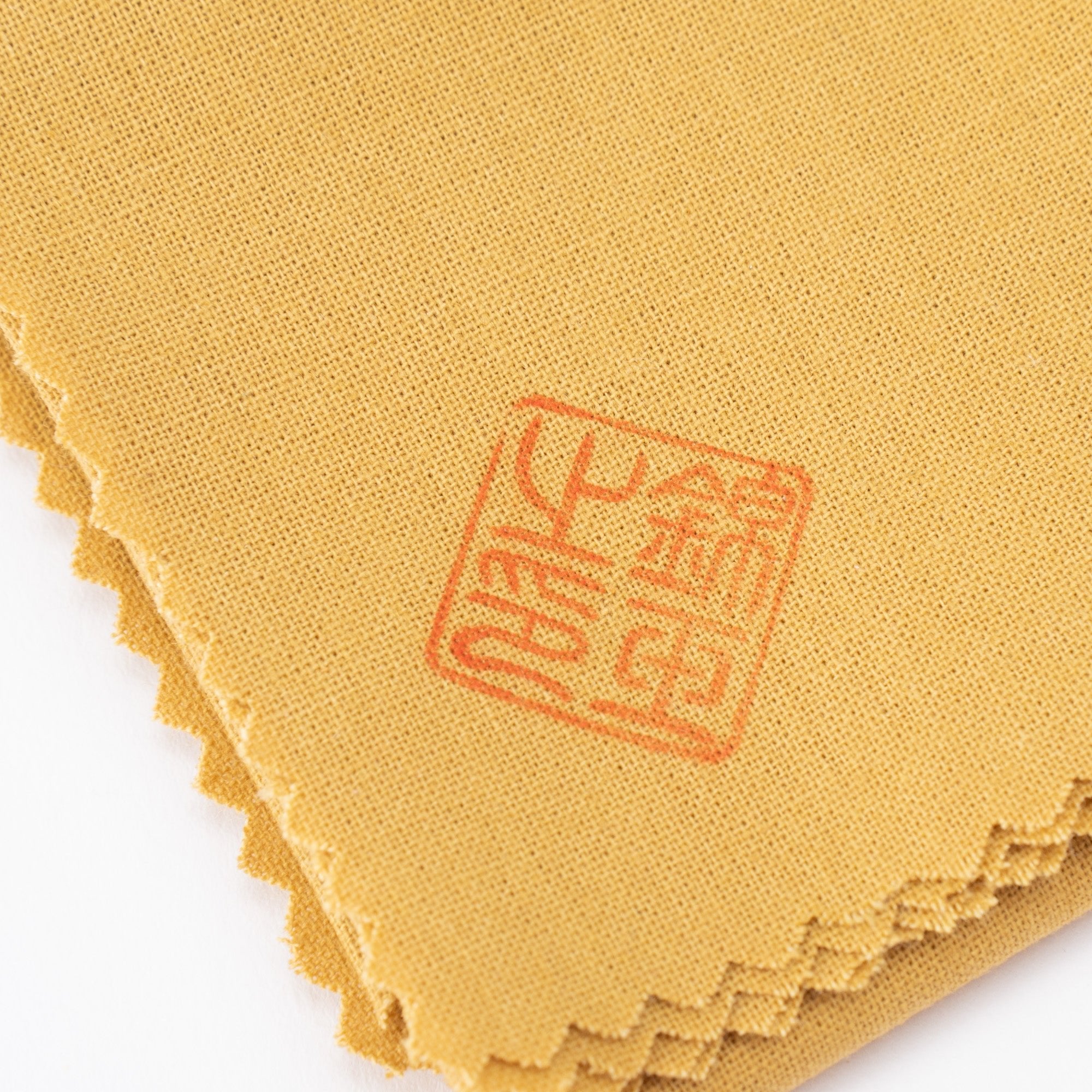
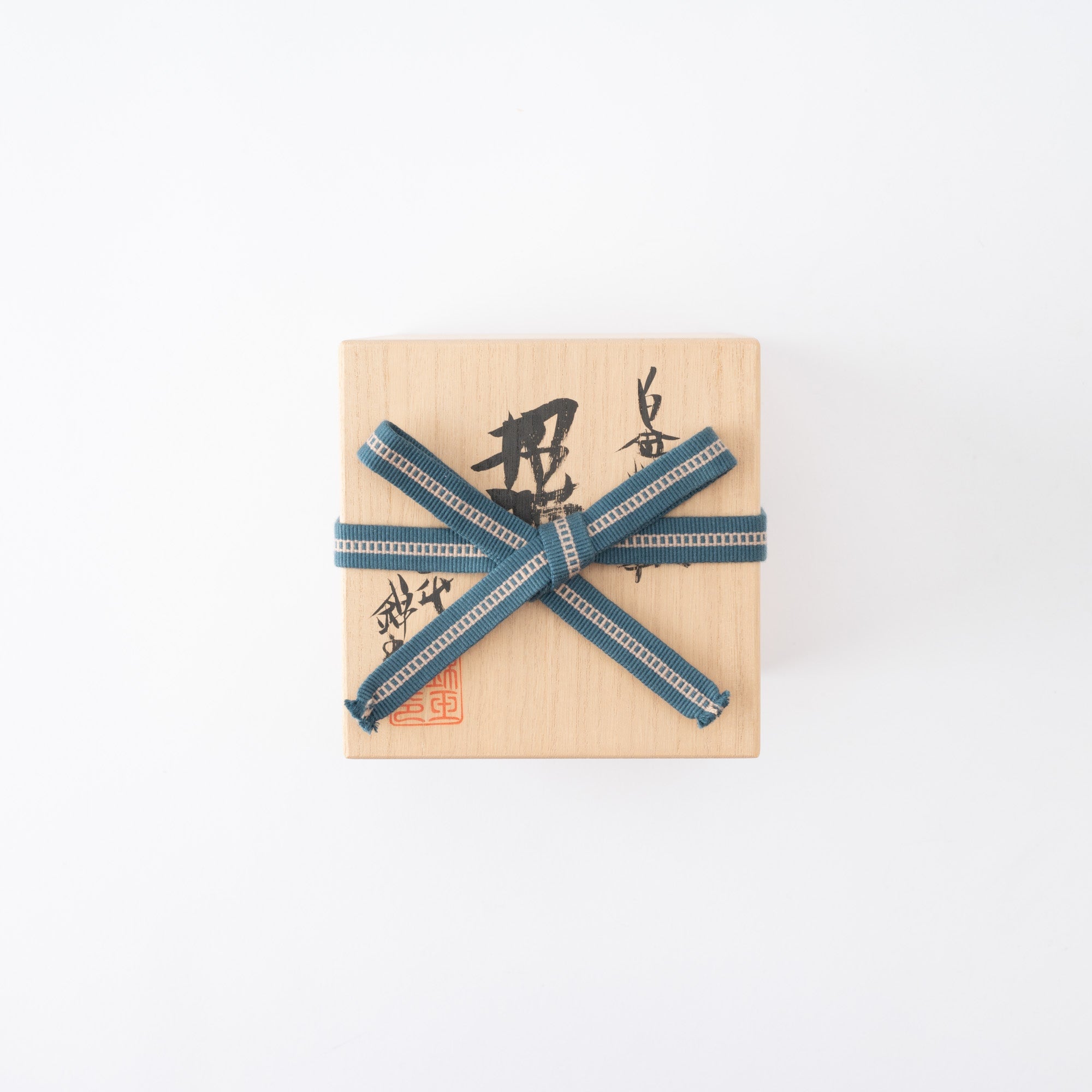
Morikin Aochibu Plum Blossom Pattern Lucky Cat
The Morikin Aochibu Plum Blossom Pattern Lucky Cat expertly combines the aochibu "blue dots" and morikin "raised gold" techniques. This exquisite piece captivates with its intricate design featuring a black base color that serves as a canvas for the mesmerizing blue dot swirl pattern, applied with perfect precision.
The elegance of this lucky cat ascends further with the classic portrayal of red and white plum blossoms using the morikin technique. The symbolism of the red and white plum blossom motif enriches the auspiciousness of this ornamental piece. Its refined craftsmanship is truly enchanting, exuding an air of sophistication and delicate charm.
Believed to beckon prosperity and invite fortune, this iconic feline serves as a silent herald of business success.
The black maneki neko holds the meaning of warding off evil and misfortune. The maneki neko became popular during the Edo period (1603–1868 CE), with various legends associating black cats with protection and prosperity. In Kyoto, they were also seen as symbols of thriving business. The delicate strokes that depict the cute plum blossom pattern and the textured surface make the maneki neko not only exquisite but also more lively and charming.
DES DÉTAILS
| Quantity | 1 figurine, 1 wooden stand, 1 wooden plaque |
| Size | D 6 cm (2.4 in) x H 12 cm (4.7 in) |
| Material | Porcelain |
| Package Type | Wooden box |
Fabricant / Marque
L'œuvre de Nakada Kingyoku incarne l'art Rimpa par son élégance digne et sa beauté gracieuse. Il harmonise l'interaction entre l'espace et l'artisanat miniature, alliant sensibilité moderne et techniques méticuleuses grâce à l'art des points bleus et des reliefs dorés. Son travail rend hommage à son héritage et introduit également des innovations qui subliment le aochibu style.
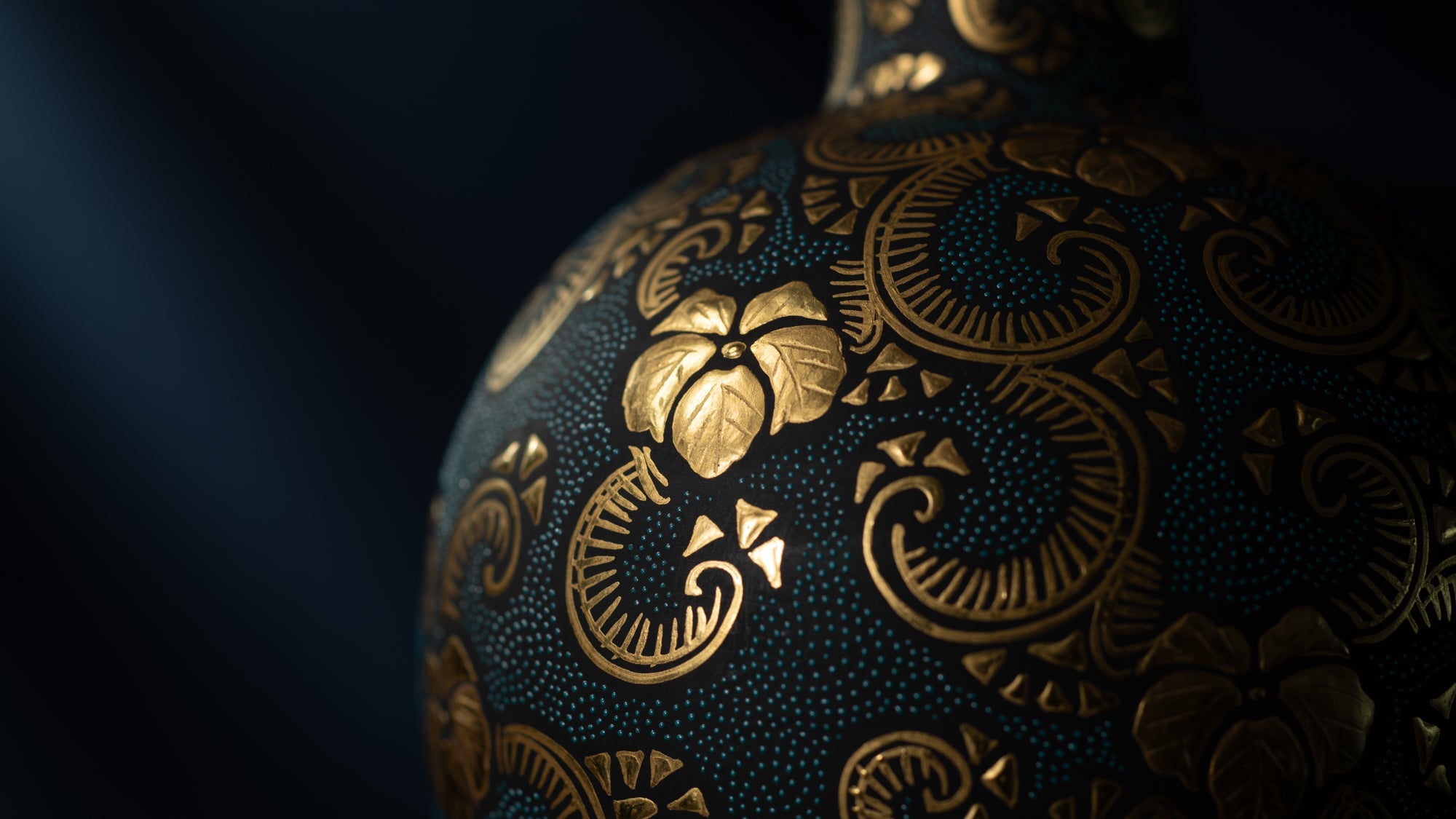
Artisanat
La céramique de Kutani est une poterie produite dans la région de Kaga, dans la préfecture d'Ishikawa, dont l'histoire remonte à plus de 350 ans. Elle se caractérise par l'éclat intense des cinq couleurs : bleu marine, rouge, violet, vert et jaune. qui s'appliquent aux lignes audacieuses et audacieuses. Sa longue histoire s'est développée grâce aux efforts inlassables et à l'enthousiasme de personnes qui ont recherché l'innovation tout en préservant la tradition.
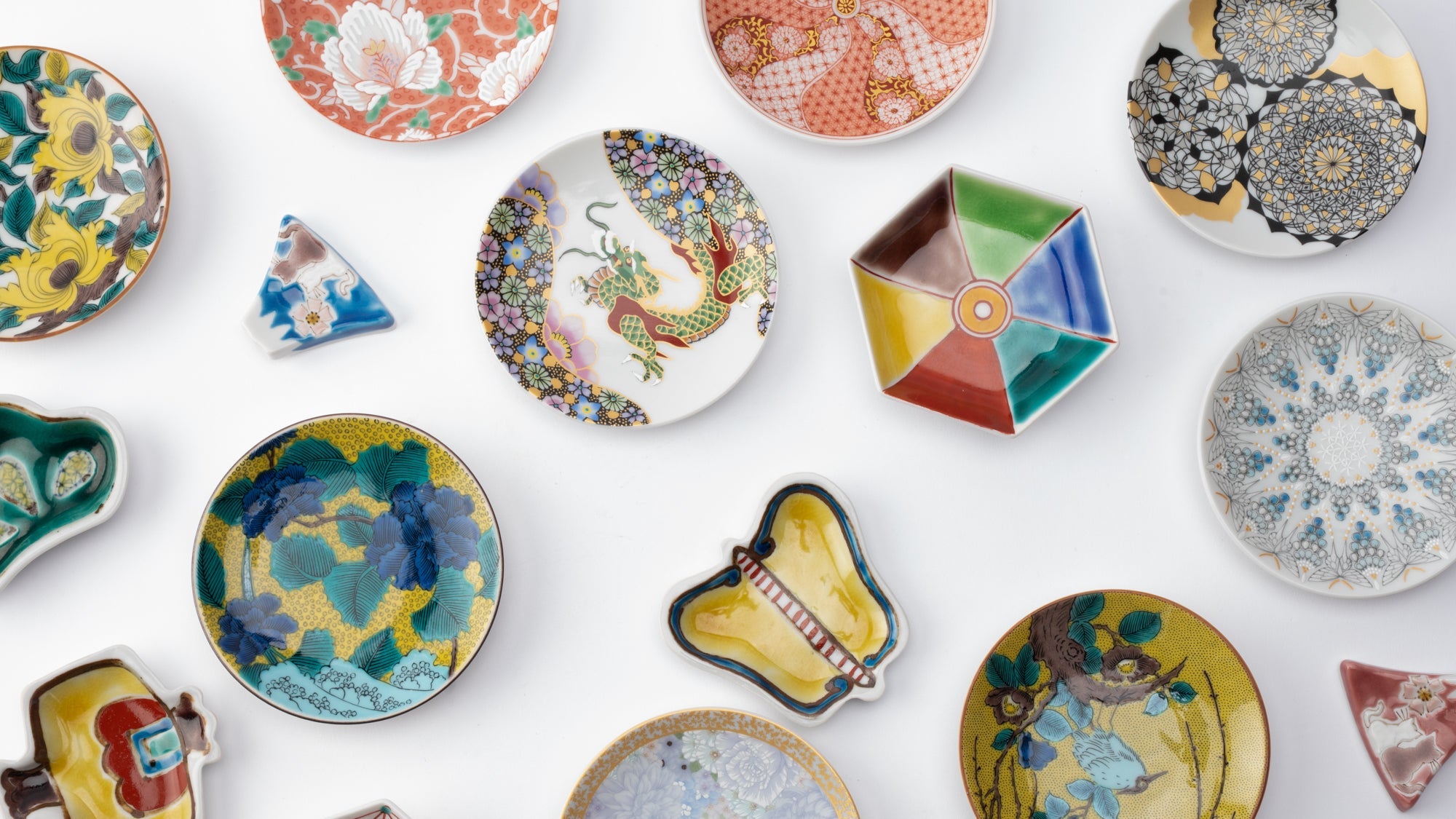
Choisir les options






















About Artist
Galerie Musubi
Depuis sa création, Musubi Kiln s'est efforcé de faire découvrir au monde les meilleurs métiers traditionnels des maîtres de tout le Japon.
Ici, dans la galerie, nous mettons en valeur le plus haut niveau de techniques traditionnelles transmises de génération en génération. Vous pourrez y découvrir les œuvres de maîtres qui ont non seulement perfectionné ces méthodes, mais y ont également ajouté leur imagination pour innover encore davantage.
Certains de ces maîtres ont même été nommés Trésors nationaux vivants, un titre qui leur a été décerné par le gouvernement japonais pour reconnaître officiellement leur contribution à l'artisanat et à la culture, consolidant ainsi leur héritage et en faisant d'eux une partie importante de l'histoire de l'art.
Chaque pièce est minutieusement fabriquée à la main pendant de nombreux mois pour créer un trésor intemporel et unique. Et une fois chez vous, vous ferez partie de son histoire.
Bienvenue dans la galerie. Parcourez-la à votre guise.
